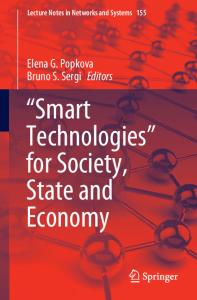Changes in the Degree of LRO in B2-Ordered Intermetallic FeAl
- PDF / 438,200 Bytes
- 6 Pages / 393.3 x 625.5 pts Page_size
- 47 Downloads / 390 Views
nominal concentration of the prepared material was Fe-44.8at%Al, with a grain size of about 300pm. A small part of the as-cast material was first ground to powder and tested by X-ray diffraction. The test revealed B2 superstructure and no other lines appeared. From the ingot slices were cut mechanically by a conventional wire saw. Out of these disks samples in s-shape geometry (width: 0.8mm, thickness: 0.2mm, total length: 25mm) were punched out by spark erosion. Strips of pure, well-annealed copper were attached to both ends of the sample in the form of a loop and carefully spot-welded. Electrical contacts were made by spot-welding thin copper wires to a part of the copper loop not being in direct mechanical contact with the sample. The glass-wool insulation of the contact copper wires (Haereus) allowed short thermal treatments up to 923K. Two samples were mounted on a sample holder next to a Ni-NiCr-thermocouple. For the thermal treatments a usual tube furnace under purified Argon atmosphere was used. The temperature of the furnace was kept constant within ±2K. Resistivity measurements were done on quenched samples relative to a dummy reference specimen of same material by the usual potentiometric method. Whenever readings were taken the sample was kept in a stirred bath of liquid nitrogen. The measuring accuracy was essentially limited by the extreme brittleness of the sample material which caused repeated breaking of electrical contacts requiring new spot-welding. In addition, brittleness resulted in generation of micro-cracks, leading to
a superposed resistivity increase for the first measuring series. It was tried to separate this effect from actual resistivity changes by appropriate subtraction. For the last isochronal run (run 4) the samples were completely dismounted, electrochemically polished in order to stabilise the sample surface and homogenised at 1223K for 3 hours followed by a water-quench from 773K. It was possible to measure this run without any breaking of contacts. Four runs of isochronal annealing (AT=20-25K, At=20min) have been carried out:
run 1: As-prepared, no additional thermal treatment after casting and sample preparation. run 2: Following reverse isochronal annealing treatments between 723K and 523K subsequent
to run 1; the last annealing temperature before run 2 was 563K. run 3: After annealing for 25h at 803K and quenching. run 4: After homogenisation and quenching from 773K.
2. ,-,
1,5
. ;;•9
13a
U,.)
0,5 1
_
-
"
a3
S -2 -2,5.
400
500
600
700
800
900
temperature [K] Figure 1: Relative change of resistivity versus temperature during isochronal annealing (AT=20K, At=20min). (r) run 2, (0) run 3, (0) run 4. KK8.23.2
1000
RESULTS Run 1 and isothermal annealings above 723K suffered from influences not corresponding to ordering effects. We believe that most probably this is a consequence of the enormous brittleness of the present sample material causing additional sample resistance by generation of micro-cracks. It can be shown, however, that all curves behave in
Data Loading...











